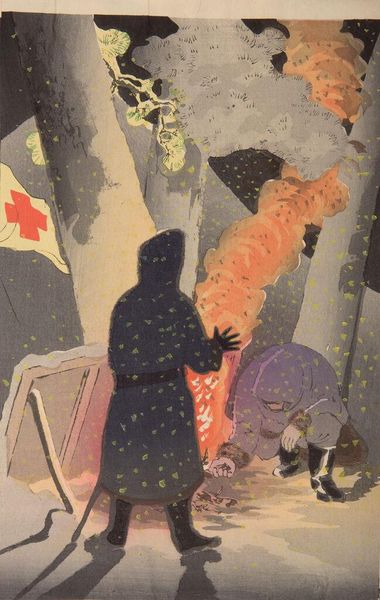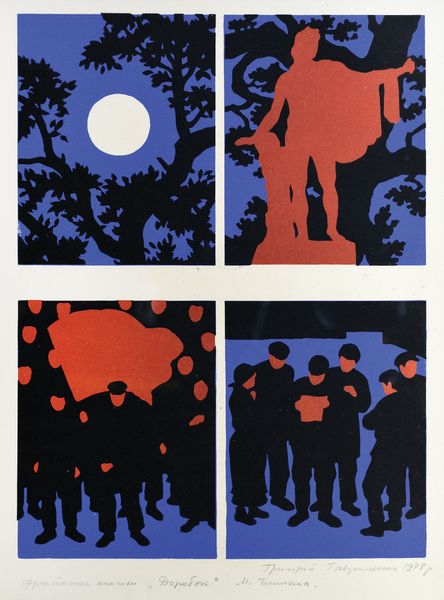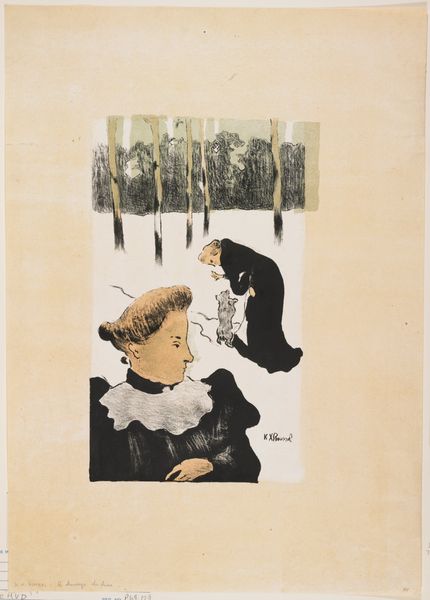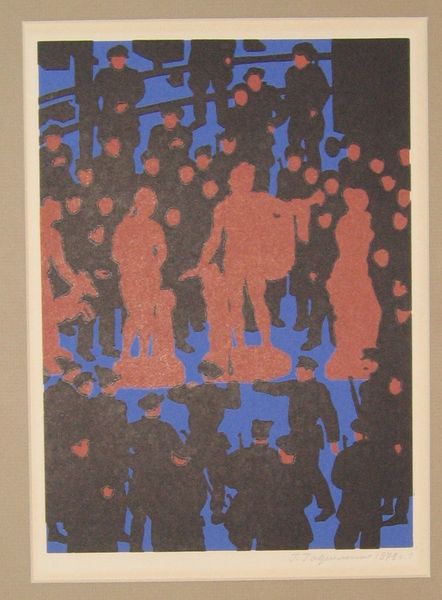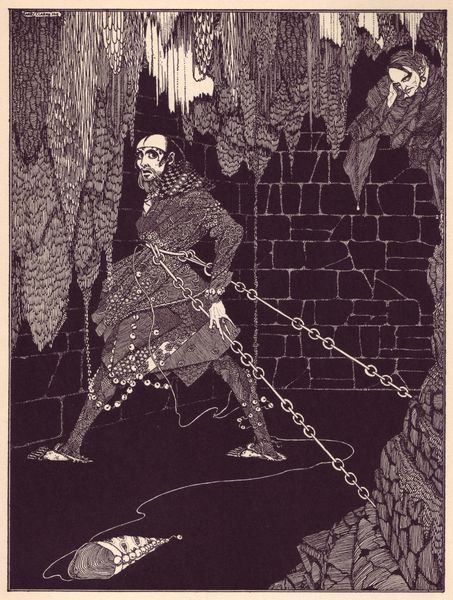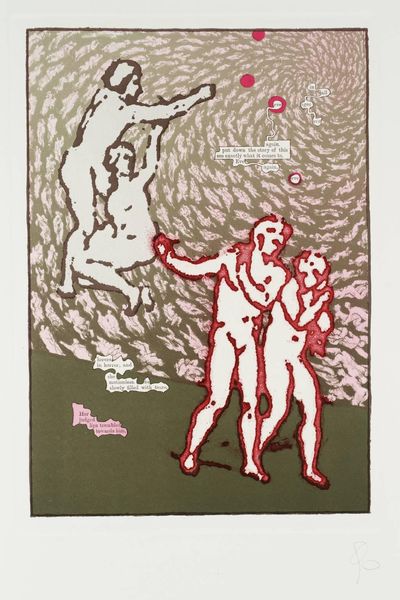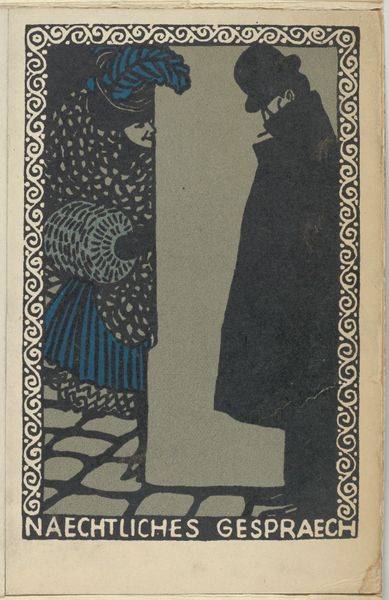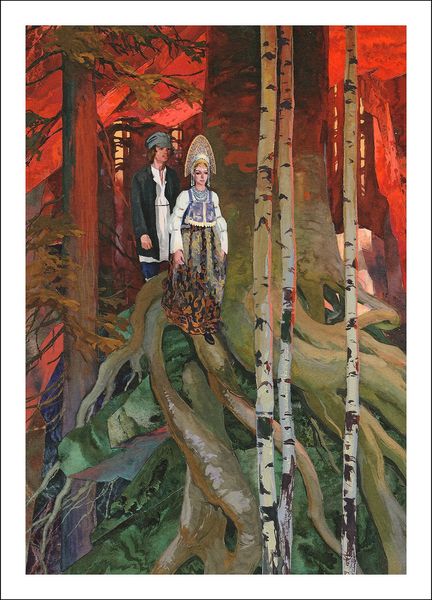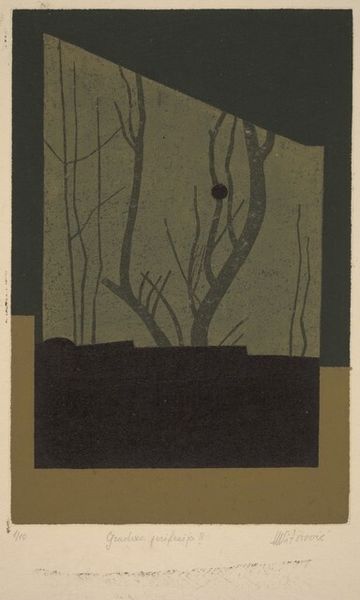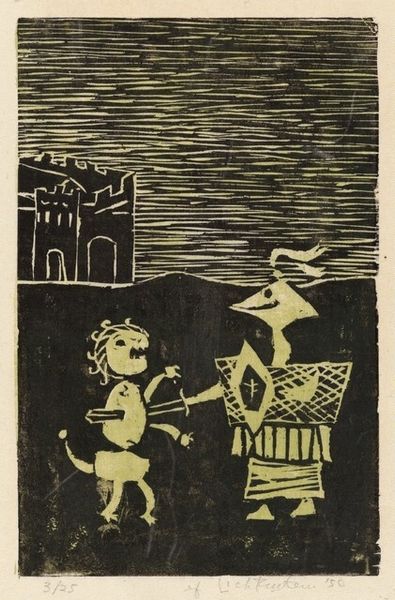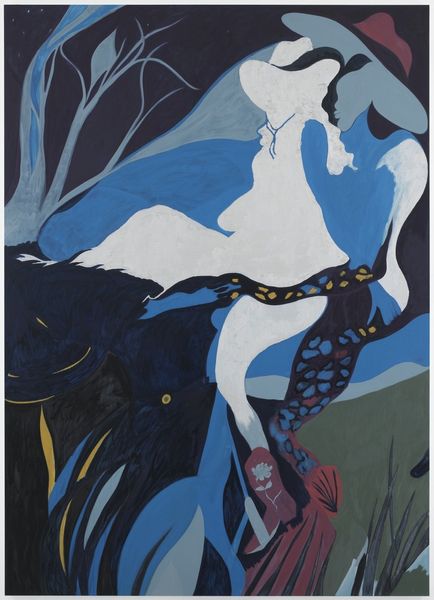
#
popart
#
narrative-art
# print
#
landscape
#
pop art
#
figuration
#
folk-art
#
naive art
#
pop art-influence
#
line
Copyright: Hryhorii Havrylenko,Fair Use
Curator: Well, I'm immediately drawn to the almost harsh contrast of colours. Is that typical for this artist? Editor: As a matter of fact, Hryhorii Havrylenko created this piece, "Ivan Tsarevich and Baba Yaga," in 1979. It's currently held in a private collection. Considering Havrylenko's engagement with printmaking, this contrast could be understood as a conscious choice—maximizing the medium's capabilities. What’s most striking, however, is how this colour dynamic highlights not just the forms within the image, but the labor that's implicit in bringing these figures to life through printmaking. Curator: Interesting perspective. I am struck by how this print, ostensibly illustrating a Russian folktale, still manages to invoke larger issues of cultural identity within the Soviet context. It seems like a subversive retelling, perhaps. Baba Yaga, rendered here, becomes less of a monstrous witch and more a guide, or even a symbol of traditional beliefs persisting in a rapidly changing political environment. Editor: Yes, it's important to remember that these "naive" forms actually come out of the complex interplay of materials and making. The artist has chosen to emphasize flat planes of color rather than using traditional shading. So how does this materiality connect to its role within exhibitions or collections that celebrate folk art and national identity? Does this treatment enhance its accessibility? Or is it meant to simply serve as illustration? Curator: I believe it’s both. Consider the public function of this work in the late 70s, particularly regarding Soviet-era attitudes toward folk art. "Ivan Tsarevich and Baba Yaga" participates in a larger discussion about the state's promotion of acceptable narratives versus the hidden meanings viewers might project onto it. Editor: It’s so interesting how we perceive that cultural role through these tangible aspects, right? And by analyzing the technical execution – that interplay between flatness, starkness, and, above all, deliberate composition, we reveal the labor. Curator: Agreed, by positioning this image within the cultural sphere of late Soviet Ukraine, and especially understanding this fairytale figure and those visual devices, we can recognize that those choices also reflect, critique, and negotiate the viewer's socio-political landscape. Editor: I leave now considering the power of an artwork, which operates on a cultural level by revealing the connection between its production and that landscape. Curator: Precisely, thank you. I walk away seeing now more vividly how folk art can serve not just as visual storytelling but as historical documentation of resistance and cultural expression, and vice versa.
Comments
No comments
Be the first to comment and join the conversation on the ultimate creative platform.


